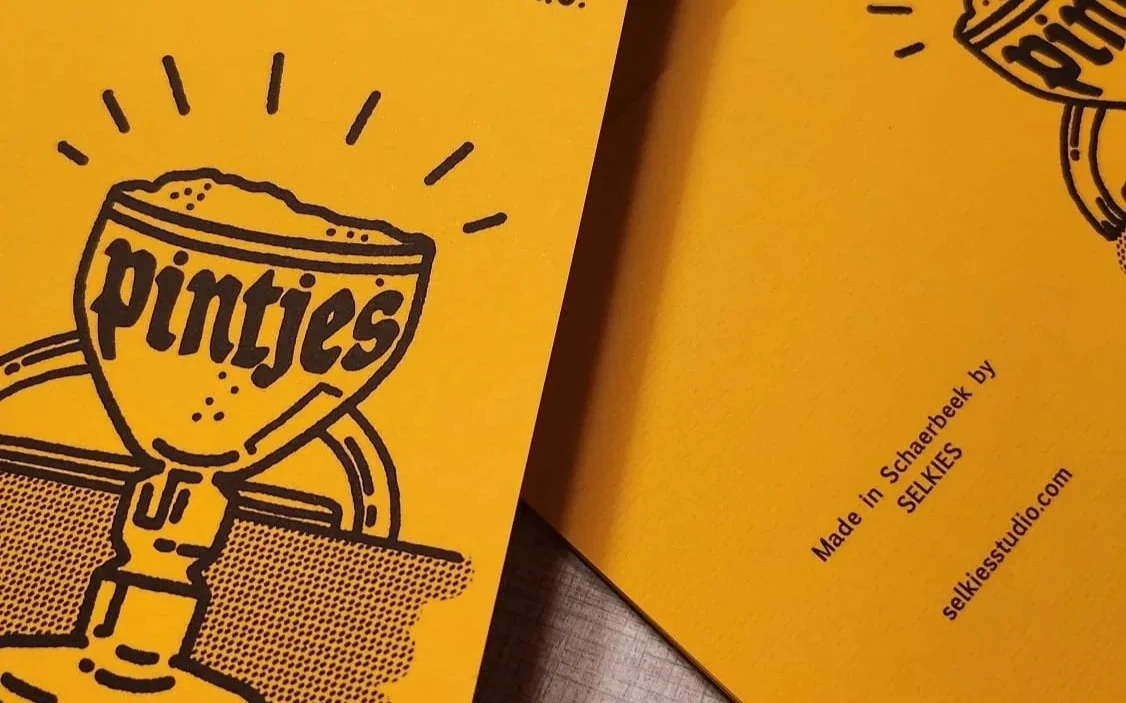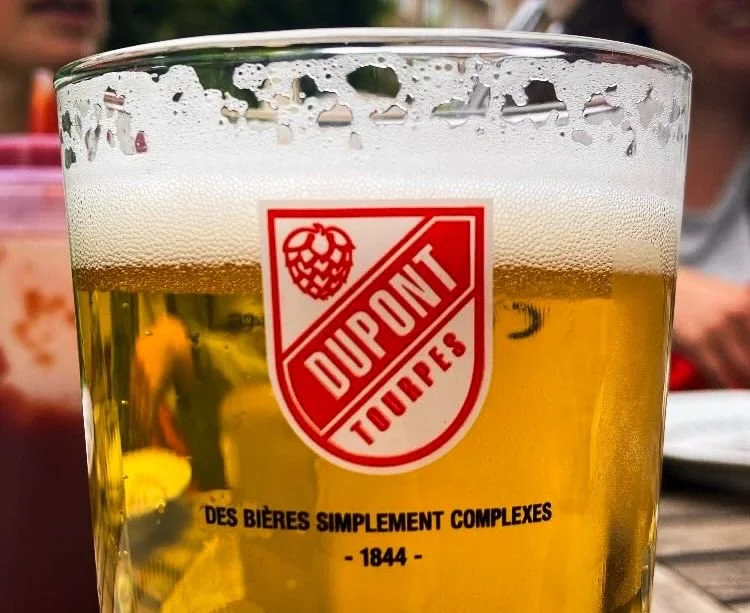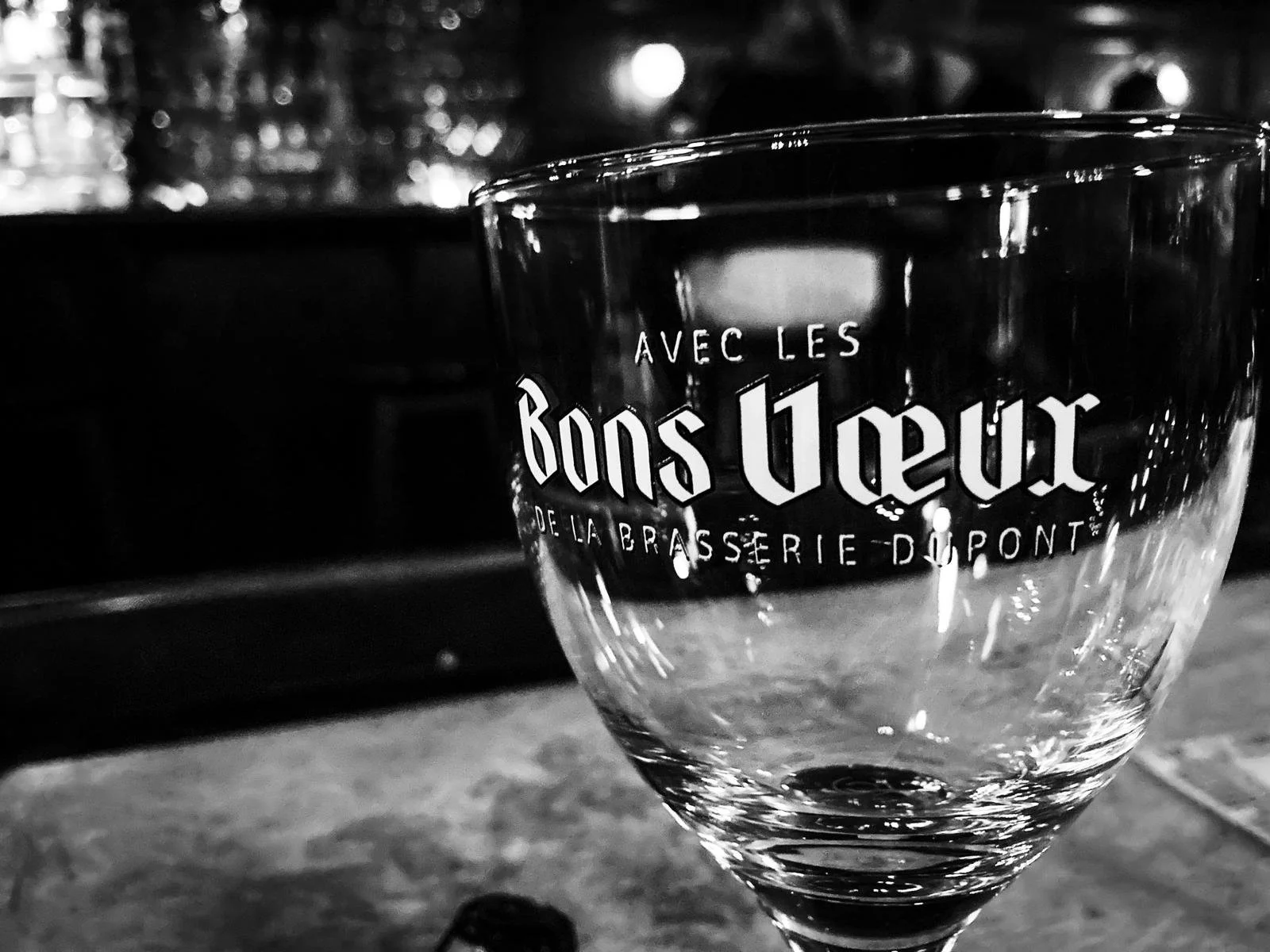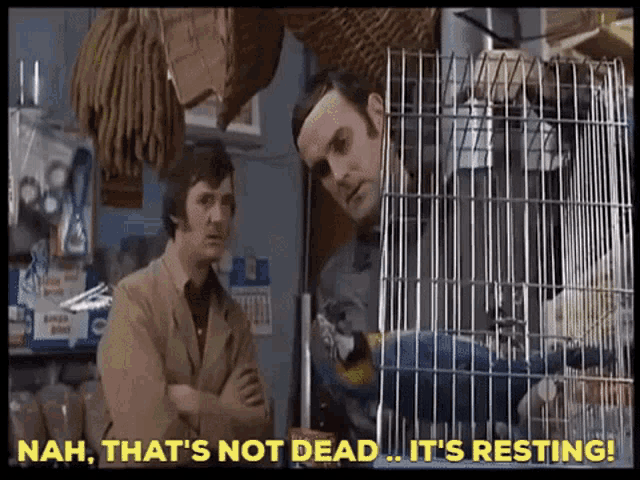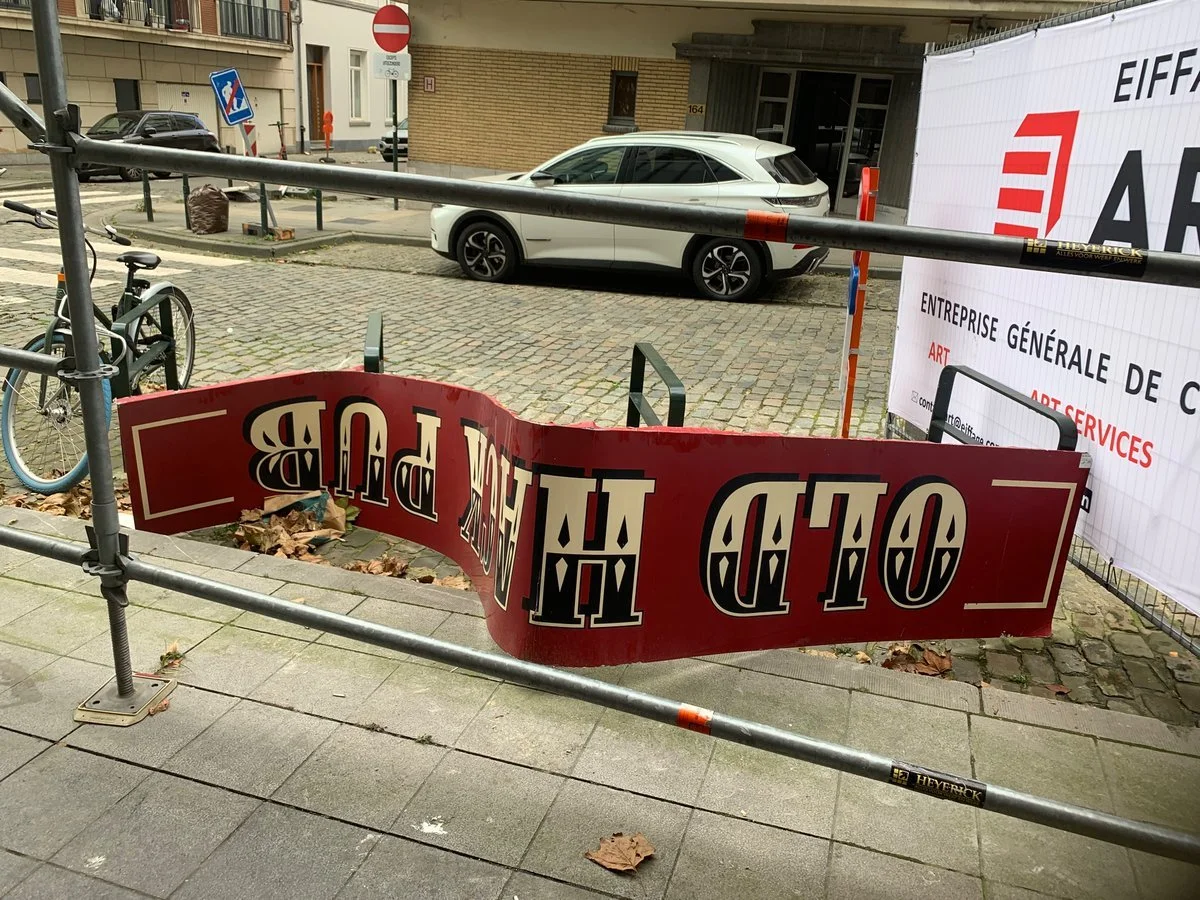Brussels does Tournée Minérale // Low and non-alcoholic brews from Brussels
Belgian brewing has a well-earned reputation for producing beer that’s boozy to the point of self-destruction for many an unwary visitor. But even Belgium isn’t immune to the global trend towards lower alcohol, lower calorie - healthier - beer. For several years now, following an initiative of charities Stichting tegen Kanker and De DrugLijn, February is designated Tournée Minérale, the annual alcohol-free month. Brussels’ brewers have been to the fore in coming out with low- and non-alcoholic alternatives to the often insipid and frequently undrinkable non-alcoholic (NA) options on supermarket shelves. After a month of mindful drinking here’s three local Brussels alternatives to a night on the Delirium Tremens.
The Expected // Brussels Beer Project’s Pico Bello
Brussels Beer Project’s (BBP) 0.5% alcohol by volume (ABV) Pico Bello took 18 months development before the brewery launched it in late 2019. Tagged as a Hazy IPA Zero, Sam Fleet - brewer at the company’s Brussels brewpub - says it’s a little more complicated. “If you wanted to stick a style to it,” Fleet says, “It’s essentially a low-ABV, mixed fermentation, hazy sour IPA.” Fleet was influential in pushing the brewery to experiment with low-ABV beers, taking inspiration from his English upbringing among sessionable pints. First came a limited-run hoppy pale at 3.1% ABV, followed by BBP’s first sub-3% beer, the Supr Sessn hoppy session IPA.
“We absolutely wanted to avoid the kind watery NA stuff you find out there.”
Fleet and his brewpub colleagues played around with different techniques to bring down the alcohol content of these beers as low as they could. Yeast strains that inefficiently convert sugar into alcohol, short mashing and boil schedules, and dilution were employed, but they were butting up against the limits of their brewpub set-up. “Below 2.5% [ABV] you start to get into a risk of infection and it’s difficult to guarantee stability and quality,” Fleet explains, because a shortened mash and boil meant the wort (unfermented beer) wasn’t sterilised and was consequently at risk of a potential contamination that could make drinkers quite ill. There was also a risk more conventional yeast used in other beers could cross-contaminate and inadvertently increase the alcohol content of the low-ABV beers.
While the brewpub team pushed their low-alcohol limits, BBP were increasing their collaboration with the De Proefbrouwerij contract brewery (BBP produce their core beers here and at another contract brewery in Flanders), and so Fleet decamped to De Proef to develop Pico Bello. The base recipe was taken from the brewpub experiments to make a “super hoppy, hazy [NA] IPA,” Fleet says. “We absolutely wanted to avoid the kind watery NA stuff you find out there.”
He and the brewers at De Proef employed a short mash to extract as little sugar as necessary from the grain. A very weak yeast strain consumes what sugars it can, as do several strains of lactobacillus bacteria. Fermentation is then “arrested” (stopped intentionally before fermentation is complete), the beer is dry-hopped, everything is recirculated, and it is finally piped into cans.
The result is a light, lemon-spritz IPA with some haze (courtesy of oats and wheat that also add some additional body to the beer) and a tartness from the lactobacillus that creeps up slowly. Contrary to some initial concerns within the brewery, demand for Pico Bello has been brisk. “We sold out at the brewery twice already,” Fleet says, “Which was a surprise…I think it’s going to become an even bigger thing when Tournée Minérale kicks in.”
The Eccentric // Brasserie Fermenterie L’Annexe fruit fermentations
A year and a half ago, L’Annexe - Brasserie Fermenterie de Bruxelles opened behind an ivy-strewn facade and battered wooden door on cobbled Rue du Metal in Brussels’ St. Gilles neighbourhood. The facade hides a jumbled-up space filled with several squat wood-panelled brewing vessels and larger stainless steel fermentation tanks. The brewery was founded by childhood friends and local Brusseleirs Grégoire Berthon and Maxime Lagrillière. The former was working in fashion and the latter had completed his studies in theoretical physics when they found themselves back in Brussels and scheming over beers. Out of these conversations came two things: they committed to run the Marathon de Sables endurance race, and they began homebrewing. And they’ve been brewing ever since.
Aside from the usual pale ales and stouts, early in their homebrewing days Berthon and Lagrillière found they needed to make a non-beer alternative for the simple reason that Berthon’s wife was avowedly anti-beer. The pair embarked on research to find something that still involved fermentation, and settled on a recipe for a low-ABV fermented elderflower drink that Lagrillière says approximated an elderflower champagne.
Unpredictable fermentation
Other experiments in fruit fermentations followed, and after a decade homebrewing the pair made the decision to go professional. “Once we started doing the brewery, we thought, ‘What can set us apart from the other breweries, what do we like doing?” Lagrillière says. Fruit fermentations became L’Annexe’s USP. The seasonal elderflower was joined by year-round ginger beer and a raspberry and mint blend, as well as experiments with quince and peach. All are prepared with officially certified organic whole fruit (fresh or frozen).
To get them to the roughly 2% ABV mark identified on the labels, the fruit (or in the case of the ginger beer, a starter mix) is dumped with water into one of the brewery’s three fermentation tanks. If fermentation does not start through yeast already present on the fruit skins, the brewers add a little cider yeast to kickstart the process. How long fermentation takes is an open question. The tanks are not temperature controlled, so the ambient room temperature dictates whether it takes one week or three. The end product is bottled and pasteurised, and each bottle is given a little extra yeast to referment for some fizz.
“It’s not lemonade”
Production in the brewery is split roughly into two thirds beer (the brewery produces a range of saisons) to one third fruit fermentations. For the latter, Lagrillière is settling on a core range alongside seasonal variants and one-off fruit experiments. The core range will include a ginger beer, and a raspberry and mint blend alongside a dry-hopped lemonade, the recipe for which Lagrillière and Berthon are currently tweaking to match the tart lemon with the fruity hops. There are ideas of exploring other fermentation techniques - Lagrillière mentions kombucha and sake - but for now his focus is on consolidation. The brewery is and will remain for the foreseeable future a tow-man, largely manual operation with a local focus.
L’Annex has a hard enough time pitching their fruit fermentations to sceptical businesses to consider expanding much beyond the 19 communes. “No one’s going to go into a bar and ask for an elderflower fermentation. It’s not a lemonade, it’s slightly alcoholic. So some bars find it hard to sell,” Lagrillière says. Their fruit fermentations and range of saison beers - through Brussels’ organic supermarkets - means they are self-sufficient for now, and in any case these aren’t brewers aren’t fixated on growth. “We don’t really want to grow that much. We want to have a big enough market to focus on production, so we don’t have to deal with selling and all that stuff,” Lagrillière says. “What we basically like is creating new recipes and brewing…If I have to make the same beer every week [in 2019 they brewed 17 times], I’ll hire two guys to make it and do something else. That’s not really my aim.”
The Esoteric // Goutzi Kombucha
Kombucha wasn’t Tomas Leyens’ first fling with fermentation, but it was his first love. The Brussels-based film producer got his introduction to fermentation through the Noma Guide to Fermentation, and having tried and failed with lactic fermentation he alighted on the fermented tea drink. “I found someone who gave me a scoby [short for the symbiotic culture of bacteria and yeast used to make kombucha],” Leyers says. “I started with one pot, then two pots, and it didn’t stop… Something kicked in and I was passionate from the beginning.”
“It gives the brain a little kick”
Leyers’ discovery of kombucha - a fermented, slightly alcoholic, lightly effervescent, sweetened black or green tea drink with origins in the far east - came in 2019 as he decided to cut back on his alcohol consumption. “I have a stressful job, I used alcohol to wind down in the evening,” he says. “Since I was looking for an alternative with my meal in the evening, I wanted something that is fermented, that has the fermented character. You smell it, you can taste it. It gives the brain a little kick.” A year on, Leyers translated his interest into a successful crowdfunding campaign to launch Goutzi Kombucha.
It wasn’t just his need for a flavourful, low-ABV alternative to beer and wine, or the early positive feedback he received for his first brews, that led Leyers to start his own production brewery. “I’ve tried kombucha in the supermarket and I’ve been disappointed,” he says. Either it was sour to the point of vinegary, or so muted that it didn’t deliver the tart, funky fermentation kick Leyers expected. You couldn’t accuse Goutzi kombuchas of either of these flaws. Leyers makes a couple of regular brews, including a Tepache kombucha which adapts the eponymous Mexican fermented drink made from the peel and rind of pineapples. Then there are his seasonal and one-off kombuchas, including one made with yerba Mate tea and a Christmas-themed kombucha with apple and cinnamon. All are made with whole, organic fruit and all pop with tart, citric and refreshing effervescence.
Scobys do the work
Leyers set up his kombucha workshop above the La Source brewpub and Fermenthings fermentation space in Laken, and it’s there where the four(-ish) steps that make Goutzi kombucha take place. First the tea is made - depending on what he wants the end product to be, it could be black tea, green tea, or Yerba mate. The tea is then dumped into a jar with a baby scoby - the cellulose pancake containing bacteria and yeast. The scoby is what makes the kombucha and the microbes living in it get to work on the sugars in the tea, yeast converting the sugars into (small amounts of) alcohol and the bacteria producing kombucha’s characteristic tart, tangy vinegar aromas and flavours.
Leyers keeps his fermenting jars in recovered wooden cabinets, believing that the microbes seep out of the jars and into the wood, imbuing the cabinets with a supportive biotope for his kombucha, much like the region’s lambic brewers like to keep their breweries as welcome homes to bacteria and yeast. Once through this initial fermentation, the kombucha is transferred to another vessel where fruit is added and a second fermentation begins using the fruit sugars. When Leyers is happy the kombucha has leached enough fruit flavour, he bottles it and lets the bottles sit out at room temperature for a couple of days to get one final fermentation out of his yeast - giving him some fizz and a final ABV Leyers estimates at around or below 1%. The bottles then move to a fridge to sit perfectly happily for up to 12 weeks.
Leyers is never quite sure what result he will get, but for him that’s part of the fun. “It is very amazing from the starting point which tea do I use to the last part. You can get very sour, very sweet, very soft, very bitter,” Leyers says. “It’s like a chess game of fermentation.” For now - though Leyers hopes to get Goutzi on the drinks lists of some of Brussels’ restaurants this year - drinkers can only buy Goutzi kombucha from his mezzanine workshop on Friday afternoons. “It’s very simple,” Leyers says. “When the light’s on, I’m in. Then you can come upstairs, taste and what you like you can take home.”



